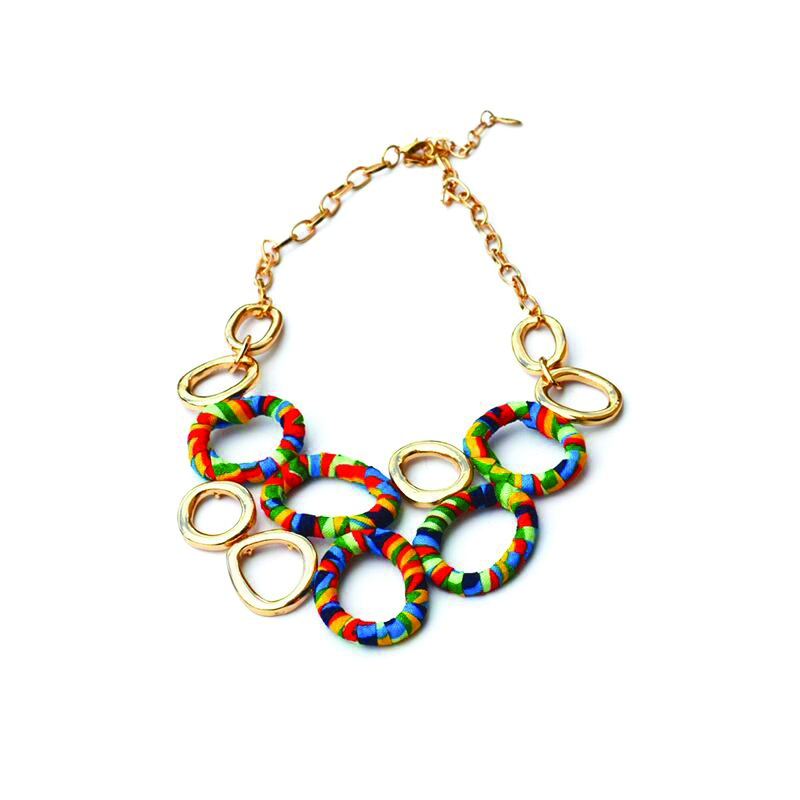Two 11-year-olds, one from Madagascar, the other from Angola, go to class together in a French school in Niger. That may have been their first lesson in diversity.
But if their paths crossed then, in the years following their respective departures to Paris and Montreal, they crossed again, before they finally settled in Brussels and formed a company together.
Urban and culturally-aware, Andrianina Sidibé and Cláudia Pita-Grós, both 36 today, can best be described as ‘Afropolitans’, a word first used by West African writer Taiye Selasi who explained it as “Africans of the world”.
It is to this world that Sidibé and Pita-Grós want to commit Africa, doing what they both know best: fashion. Their clothing company MeyNö, born out of the contraction of Niamey, Niger’s capital city, where they first met, and Noah, Sidibé’s son and Pita-Grós’ godchild, was founded to promote African print and home-grown talent, in the process sharing a rich tapestry of cross-cultural experiences. The handmade clutches and accessories they fashion are testament to their ethos.
“We grew up in Africa; our wish is to make our continent shine by its know-how and richness,” they chorus.
Their company is based in France and they have an online store. Sidibé and Pita-Grós share more thoughts on Africa and its future in fashion:
How did the partnership come about?
Since we were young we were both passionate about fashion; and as we grew up, we both knew that one day we would have to make our contribution, in our own way, to make Africa famous all over the world for its greatness and know-how in different fields.
Why African print?
We believe that our fabrics and prints are one of the riches we have in common all over the continent. Each country and region has its fabric (wax, bogolan, bazin, kente, capulana) and we wanted to glorify this part of our culture.
While African fabrics often serve as inspiration for foreign fashion collections, we wanted to create our own brand with a mix of these fabrics together with other materials mostly coming from different African countries and, most of all, 100% made in Africa.
What is the current state of Africa’s fashion industry?
South Africa, Ethiopia and Nigeria certainly play the leading role. There’s a fashion industry for sure. Locally-known, most of this industry is still composed of tailors that do custom-made rather than prêt-à-porter (ready-to-wear), whereas on the international level, so many designers are nowadays well-known all over the world, such as Marianne Fassler (South African) and Shade Thomas-Fahm (Nigerian). We also have strong fashion actors such as first Dr Precious [Motsepe] and also Adama Paris (from Senegal) who have created famous events in Africa like the Dakar Fashion Week, Johannesburg and Cape Town fashion weeks, Fashion Africa, and we also have Brazza Fashion Night, that have widely contributed in building African fashion’s worldwide fame.
There has been a lot of push, particularly from South Africa’s fashion industry, to break into the international markets, such as the United States. Is this attainable?
It is true that particularly since Dr Precious has created the fashion weeks in South Africa, the push to break into the international markets have been obvious. We can say the goal was undoubtedly attained when we see worldwide famous artistes such as Solange Knowles and Beyoncé or Rihanna wear clothes with African prints. We don’t think it is vital, but of course we cannot deny that it helps us make people aware that we have a lot of richness in our countries: raw materials, know-how and overall our people.
What type of investments will boost the industry?
We think that investments in training, mechanization and processing of raw material such as cotton should be reinforced.
How can policy help?
Africa faces political challenges such as market integrations and infrastructure [transport fees are incredibly high whether by air or by sea, because of the taxes and the lack of proactive policies that would favor employment]. In consequence, some companies would rather buy material from China than from a neighbor. In our case, the materials used to manufacture our products come mainly from African countries (DRC, Nigeria, Burkina Faso and Ivory Coast) and routing between those different countries is not always easy. Transportation between Burkina Faso and DRC, for instance, must pass through France, which generates significant costs and lengthening delays.
Government funding for fashion students to start their collections, travel to fashion shows and exhibit their collections is one of the ways in which new policies could help accelerate the growth. We have also noticed that some local craftsmen find difficulties in buying their engines and other equipment. As a result, despite their obvious talent, they struggle to live off their know-how and passion.
What is the role of young people in this trade?
Creativity! The ‘inventivité’ (ingenuity) of some young artistes, designers or musicians has no boundaries. Just by looking at people’s style in the streets of cities like Kinshasa or Luanda, you realize how creative younger generations may be; and demanding too. It forces the industry to renew itself over and over again.
